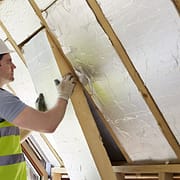House Inspection and the 4 Ds: How can you assess the risks of a new property?
Whether your taste in homes is big and beautiful or small and humble, considering the risk of a particular design of a house should have a huge impact on whether or not to purchase a property – especially in a country with a reputation for damp homes! If you were to conduct a house inspection before buying, would you know what low-risk design looks like if you saw it?
Conducting a house inspection
The first thing you should be thinking when doing a home inspection is KISS. Not that kind of kiss (despite how attractive your property inspector is). We’re actually talking about the classic golden rule for us Kiwis: Keep It Simple Stupid.
If you’re looking around a home that you’re interested in buying, and the design seems too complicated or intricate there’s a high likelihood that the design will increase the risk for water ingress. The simpler the design of the house, the fewer opportunities there are for issues to rear their ugly heads later down the track.
Avoiding damp housing
In New Zealand, with our unpredictable variety of weathers and temperatures, we’ve established a reputation for having damp homes. You see it in the news all the time. That’s why when you’re out there house hunting, I recommend thinking about the four Ds of building: deflection, drainage, drying, and durability. Better yet, consider getting a pre-purchase house inspection conducted to check for the four Ds before you sign anything. But what are the four Ds?
Deflection
Deflection encompasses what a home has in place to intercept water at its exterior and deflect it away to decrease the risk of water ingress. Consider the type of cladding, roof and eave width. These all impact the house’s ability to deflect water from getting in and rotting the framework from the inside out.
Drainage
Drainage is obviously crucial to any home but is often something that gets overlooked by house hunters. Generally cladding of houses built before the 2004 Building Act was not on a drained cavity system. Drained cavity systems are designed to discharge water that may penetrate the building envelope through cladding, weather tightness risk junctions, and possibly from leaking joinery.
Drying
The cavity allows water to discharge from behind the cladding and also allows air to dry the cavity to prevent moisture damage. Cladding fixed directly to the wall framing is most cases does not allow water to exit the building envelope and can lead to moisture damage of wall framing.
Durability
The durability of the home’s structure is so important, especially with the variety of weather we are exposed to here in New Zealand. The Building Act only requires cladding to perform for a minimum of 15 years. Most cladding systems have a longer warranty than this and, with maintenance, can last for many years longer than what the manufacturer warrants. Obviously that type of cladding is something that should be seriously considered when purchasing a property. I see many 30+ year old houses with cladding that needs replacing. Small amounts of cladding can be replaced under Schedule 1 of the Building Act, but if a substantial amount of cladding requires to be replaced, then a Building Consent is required. This could have a big financial cost to keep the property water tight.
While it’s a great idea to consider whether a potential purchase has a low-risk design, sometimes the specifics need to be overseen by a professional. Having a qualified pre-purchase building inspector conduct a house inspection to look over complications of the design and cladding type is your best chance of making sure your potential home is built to last, and won’t cost you a fortune in the long run.



